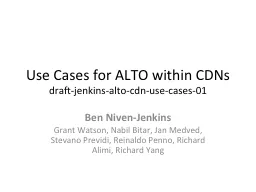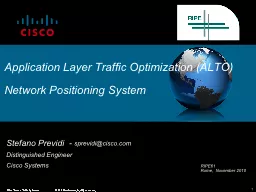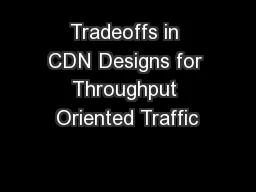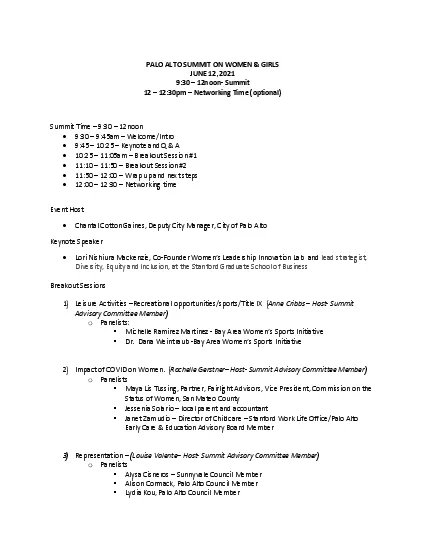PPT-Use Cases for ALTO within CDNs
Author : alexa-scheidler | Published Date : 2015-10-17
draftjenkinsaltocdnusecases01 Ben NivenJenkins Grant Watson Nabil Bitar Jan Medved Stevano Previdi Reinaldo Penno Richard Alimi Richard Yang Differences
Presentation Embed Code
Download Presentation
Download Presentation The PPT/PDF document "Use Cases for ALTO within CDNs" is the property of its rightful owner. Permission is granted to download and print the materials on this website for personal, non-commercial use only, and to display it on your personal computer provided you do not modify the materials and that you retain all copyright notices contained in the materials. By downloading content from our website, you accept the terms of this agreement.
Use Cases for ALTO within CDNs: Transcript
Download Rules Of Document
"Use Cases for ALTO within CDNs"The content belongs to its owner. You may download and print it for personal use, without modification, and keep all copyright notices. By downloading, you agree to these terms.
Related Documents












![[LATEST] Palo Alto PCCSE Certification Study Guide](https://thumbs.docslides.com/981806/latest-palo-alto-pccse-certification-study-guide.jpg)
![[LATEST] Palo Alto PCCSE Certification Study Guide](https://thumbs.docslides.com/981807/latest-palo-alto-pccse-certification-study-guide-641f04685caaa.jpg)
